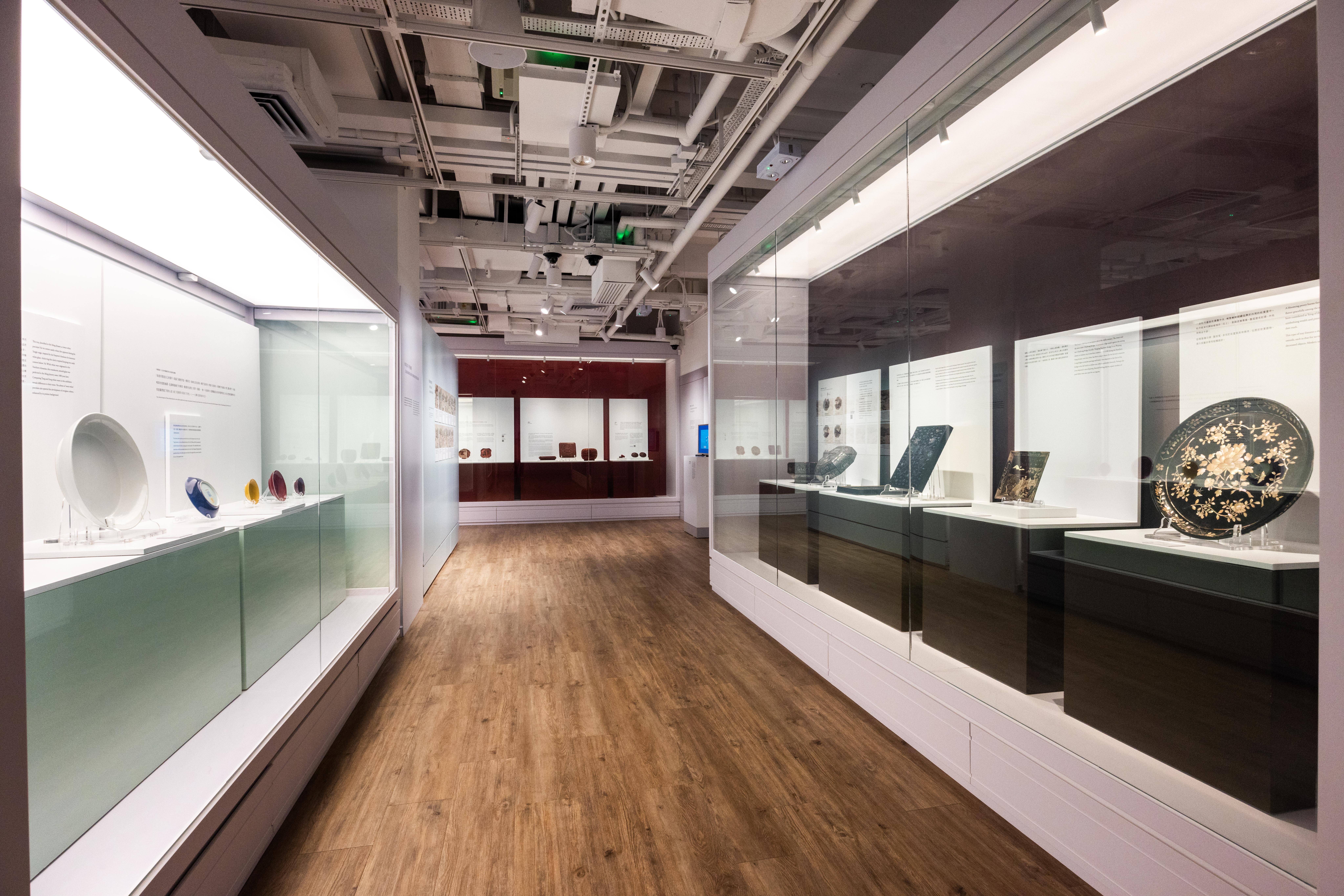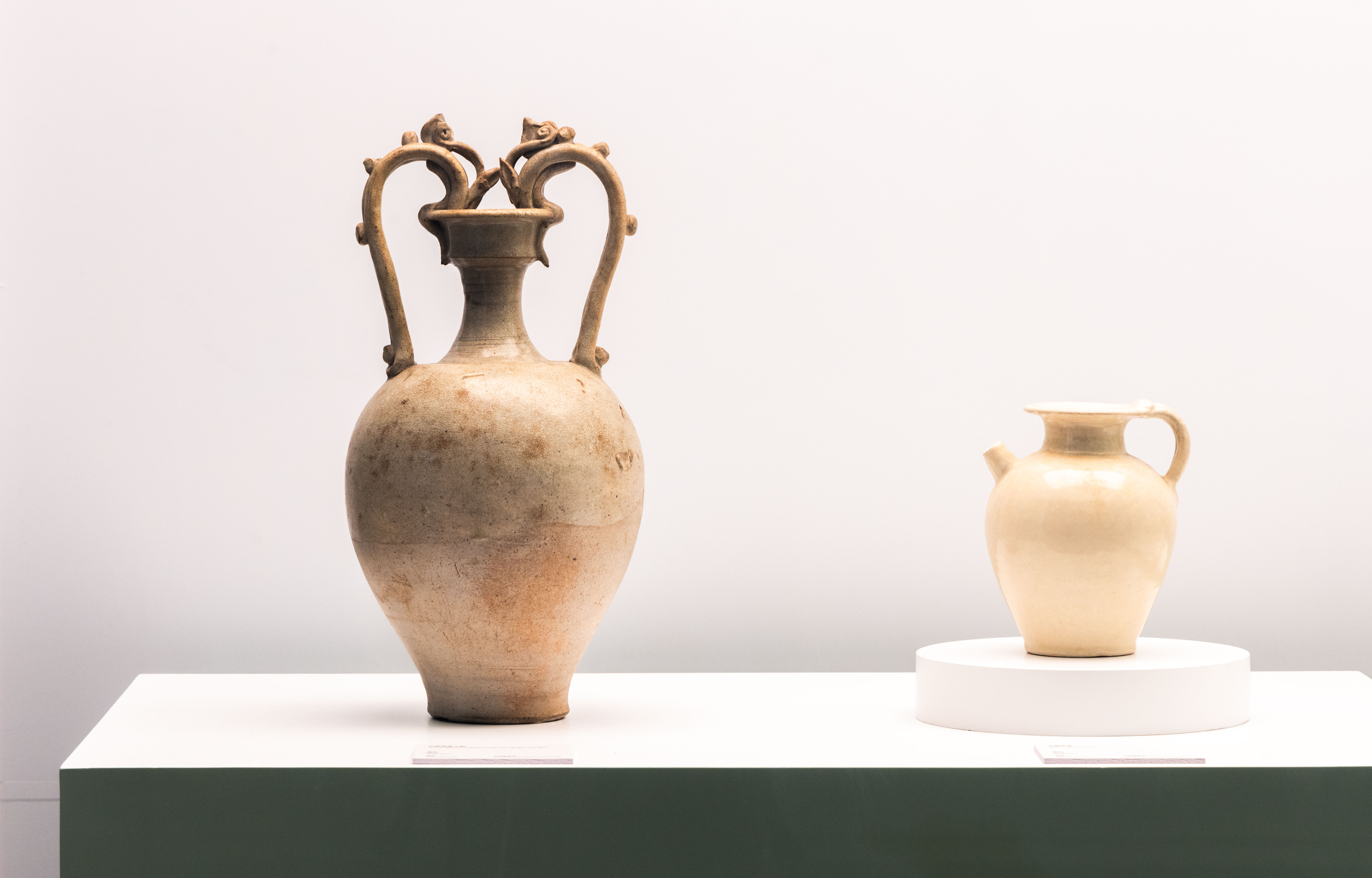
7 minute read
Lingnan campus events tell story of lacquer and porcelain
Text: John Cremer
Photos: Hazel Chow
Over the next few months, every visitor to Lingnan University should make time to take in a compelling on-campus exhibition which traces the history of two of China’s most important crafts and the decorative arts that gave them such distinction.

“Shine and Shade, Earth and Wood; The Story of Everyday Porcelain and Lacquer ” runs until 2 December and features more than 30 outstanding pieces spanning the period from the Tang to the Qing dynasty, extending from the 7th to the early 20th century.
Each of the items on display, from a Southern Song green-and-white glazed octagonal bottle with plum blossom carvings to a Ming yellow-ground lacquer box with a dragon sculpted in relief, add to an understanding of Chinese history, artistic sensibilities, manufacturing techniques, and court life.
And, for many, these rare and exquisite artefacts are also sure to inspire an interest in further detailed study of everything from the materials used and the main production centres to the symbolism of decorative colours and motifs, the mastering of essential skills, and the general flowering of Chinese culture.

To provide a suitable introduction to these themes, a special series of complementary events took place in spring under the banner “Entwined Paths: A Historical Dialogue between Lacquer and Porcelain”.
The week-long project included public lectures, a curator-led exhibition tour, two lacquerware experience workshops, and opportunities to discuss some of the finer points with experts and collectors.
This was a chance to explore the role of seemingly ordinary objects – cups, bowls, plates, vases, boxes and inkpots – in everyday life and perhaps in rituals, while also appreciating their design, durability and undimmed aesthetic appeal.
In addition, the various sessions showed how the use of lacquer, derived from processed tree sap, and porcelain, made from refined clay fired at high temperatures, had evolved over the centuries and been instrumental in transforming art, craftsmanship and material culture, besides leaving a creative legacy which links China with the rest of the world.

In her lecture, Dr Helen Glaister, Director of the Arts of Asia course at London’s Victoria and Albert (V&A) Museum, focused on the intricacies of surface, pattern, shape and form plus the diversity of objects and how they reflect life in each era.
“In terms of ceramics, a combination of the visual and the tactile is very important,” said Dr Glaister, who was invited to Hong Kong as part of Lingnan’s Chamber of Young Snow Distinguished Visiting Scholars Programme for 2024/25. “At first, you look at the surface and shape of objects, but as you study more, you begin to understand it as a science –the chemistry, technologies, different glazes, firing, and how difficult it is to produce just a very basic pot.”
Part of the fascination of studying items from China is that they shine a light on the life of the imperial court and the everyday. For instance, ordinary people at various levels of society might have used a ceramic pillow or headrest, while merchants, householders, overseas traders and the literati would have been more than familiar with specialised products made for distinct purposes and different markets, as well as the narrative themes used in their decoration.

With respect to lacquerware, Dr Glaister noted that the production process was slower and more expensive, requiring many layers to be applied and allowed to set, sometimes over the course of a year.
Traditionally, the main producing areas were in the southern parts of China, where a warm, humid climate is best for tree growth and tapping the sap. The attraction of the material is in the properties that make it resistant to water, heat, and insects. It can therefore be applied as a protective layer on leather, wood and metal, and archaeologists have found it was even used to preserve the equipment worn or carried by Xian’s terracotta warriors.
For ornamentation, there are two classic techniques: red carved lacquer and black lacquer with mother-of-pearl inlay. And while scholars recognise that certain patterns and figures originated in textiles and porcelain, there is more to be learnt about the entwined histories and overlap.
“Overall, Chinese lacquer has been under-studied,” Dr Glaister said. “But a lot of contemporary international artists are now discovering lacquer craft and, along with ceramics, see it as another source of inspiration.”
In considering the global legacy of Chinese ceramics, Dr Wang Guanyu, Associate Curator for Antiquities at the Art Museum of The Chinese University of Hong Kong (CUHK), spoke about the place of porcelain in early exchanges between East and West and the wide-ranging benefits of these interactions.

She highlighted, for example, the fencai bowl with a peony pattern on a coral-red ground from the Qianlong period of the Qing dynasty, which is on display at the Lingnan exhibition. Back in the day, it was functional tableware, but it was made with techniques brought to China from Europe by Jesuit missionaries at a time when new workshops were being established as one way of demonstrating the emperor’s power and wealth.
“Ceramics are fragile yet durable and tell a story through time and space,” Wang said, explaining her own passion for the field. “ Today, you can still touch items that were made in Jiangxi province 20,000 years ago. Also, the cargoes of shipwrecks can inform us about China’s overseas markets and where different items were produced for those destinations during the age of discovery.”
She added that the choice and combination of colours for glazes and decoration of a bowl – yellow (earth), blue (sky or heaven), red (sun) and white (moon) – indicate whether it was for ritual ceremonies, the imperial family, or an official banquet. And understanding this code, as well as the original craftsman’s skills, techniques, kilns, chemical pigments and cultural influences gives a much deeper appreciation of the artistry involved.
“University museums and exhibitions play an important role in making sure students know about these cultural traditions,” Wang said. That can inspire research, creative thinking, an interest in collecting or curatorship, or even a desire to master the relevant skills.”

Visit a Ming Dynasty Legacy: Empress Renxiao’s 1405 Imperial Edition at Lingnan University
For the first time ever, a rare treasure from the heart of the Ming dynasty is on public display in Hong Kong. The Chamber of Young Snow Art Exhibition Hall at Lingnan University proudly presents “ Print and Preservation: Special Exhibition of the Exhortations to Promote Good Deeds by Empress Renxiao of the Great Ming”《古刻薪傳—大明仁孝皇后勸善書特展》. The 1405 imperial edition is a historically significant and beautifully preserved moral text compiled by Empress Renxiao herself.
This imperial edition, printed in the third year of the Yongle reign, was originally intended for the crown prince and other princes. Most surviving copies are kept in the Palace Museum, so this public exhibition is most unusual. A detailed examination of the historical context and content of this work shows how the Ming imperial court published ethical and moral texts to assert its legitimacy and stability.
Don’t miss this wonderful opportunity to see a cornerstone of Chinese moral education and imperial heritage. The exhibition runs until 2 December 2025. Admission is free.

Exhibition details
Date: 10 April – 2 December 2025
Venue: Chamber of Young Snow Art Exhibition Hall, 3/F, Patrick Lee Wan Keung Academic Building (South Wing), Lingnan University, Tuen Mun, Hong Kong
Opening hours: 10:00am – 5:00pm (Closed on Saturdays, Sundays, and public holidays)
Enquiries: (852) 2616-7466
Email: CYS_HALL@LN.edu.hk (Visitors are requested to book at least three working days in advance.)
Reservation: https://bit.ly/CYSHallVisit










